Pop Art is a revolutionary art movement that emerged in the mid-20th century, challenging traditional artistic boundaries and embracing popular culture. Uncover the world of Pop Art with WHAT.EDU.VN, your go-to resource for clear and concise answers to all your art-related questions, connecting you with the information you need to understand this influential art form. Explore the key elements, famous artists, and lasting impact of this dynamic movement, gaining insights into consumer culture, artistic expression, and the creative process.
1. What Are the Main Characteristics of Pop Art?
Pop Art emerged as a vibrant and influential art movement in the 1950s and 1960s, drawing inspiration from popular culture, mass media, and everyday objects. To fully grasp the essence of Pop Art, understanding its defining characteristics is crucial. Richard Hamilton, a key figure in the movement, succinctly outlined these traits in a letter, offering a clear framework for understanding Pop Art’s core principles.
Here’s a breakdown of the main characteristics of Pop Art:
-
Popular: Pop Art is inherently accessible, designed to appeal to a broad audience rather than an elite few. It embraces imagery and themes familiar to the general public, making it relatable and engaging.
-
Transient: Pop Art often reflects the fleeting nature of popular culture, capturing the ephemeral trends and images of the moment. It acknowledges that what is popular today may be quickly forgotten tomorrow.
-
Expendable: Embracing the disposable nature of consumer culture, Pop Art frequently utilizes imagery associated with products designed for short-term use. This reflects the movement’s engagement with the rapid turnover of goods in modern society.
-
Low-Cost: In contrast to traditional art forms that often involve expensive materials and techniques, Pop Art often employs inexpensive, mass-produced materials. This reflects the movement’s challenge to the exclusivity and elitism often associated with fine art.
-
Mass-Produced: Pop Art frequently utilizes techniques and imagery associated with mass production, such as screen printing and repetitive imagery. This highlights the movement’s engagement with the industrialization and commercialization of modern life.
-
Young: Pop Art is often associated with youth culture, reflecting the energy, optimism, and rebelliousness of the younger generation. It embraces the styles, trends, and icons that resonate with young people.
-
Witty: Pop Art frequently employs humor, irony, and satire to comment on contemporary society and challenge conventional notions of art. It often uses playful imagery and juxtapositions to engage viewers and provoke thought.
-
Sexy: Pop Art often incorporates elements of sensuality and sexuality, reflecting the increasing prominence of these themes in popular culture. It challenges traditional notions of beauty and explores the commodification of desire.
-
Gimmicky: Pop Art often utilizes attention-grabbing techniques and visual effects to capture the viewer’s attention. It embraces the spectacle and sensationalism of mass media, often employing bold colors, unusual materials, and unexpected juxtapositions.
-
Glamorous: Pop Art celebrates the allure and superficiality of celebrity culture, often depicting famous figures and iconic brands in a stylized and idealized manner. It reflects the movement’s fascination with the power of image and the pursuit of fame.
-
Big Business: Pop Art acknowledges the close relationship between art and commerce, often blurring the lines between the two. It embraces the imagery and techniques of advertising and marketing, reflecting the increasing influence of business on culture.
By understanding these key characteristics, you can begin to appreciate the multifaceted nature of Pop Art and its profound impact on the art world. Do you have more questions about Pop Art? Head over to WHAT.EDU.VN and ask away – get the answers you need, absolutely free.
2. How Can You Identify Pop Art?
Identifying Pop Art involves recognizing its distinctive visual language and thematic concerns. Pop Art distinguishes itself from other artistic movements through its bold embrace of consumer culture, iconic imagery, and innovative techniques. Here’s a guide to help you identify Pop Art:
-
Subject Matter: Pop Art frequently features imagery drawn from popular culture, advertising, and mass media. Common subjects include:
- Consumer Products: Everyday objects like soup cans (think Andy Warhol’s Campbell’s Soup Cans), soda bottles, and household items.
- Celebrities: Famous figures from film, music, and television, often depicted in a stylized or iconic manner.
- Comic Books: Imagery and styles inspired by comic book art, including bold outlines, Ben-Day dots, and speech bubbles.
- Advertisements: Direct references to advertisements, logos, and branding.
-
Visual Style: Pop Art is characterized by a bold, graphic, and often irreverent visual style:
- Bright Colors: Pop Art often uses vibrant, saturated colors, particularly primary colors (red, blue, and yellow).
- Bold Outlines: Clear, distinct outlines are common, often reminiscent of comic book art and graphic design.
- Repetition: Repetition of images or patterns is a frequent technique, emphasizing the mass-produced nature of consumer goods.
- Flatness: Pop Art often avoids creating the illusion of depth or perspective, favoring a flat, graphic style.
- Mixed Media: Pop Art may incorporate a variety of materials and techniques, including painting, collage, screen printing, and sculpture.
-
Techniques: Pop Artists often employ techniques borrowed from commercial art and mass production:
- Screen Printing: A technique that allows for the mass production of images, often used to create repetitive patterns or bold graphic designs.
- Collage: Combining different images and materials to create new compositions.
- Appropriation: Borrowing or recontextualizing existing images and objects from popular culture.
-
Themes and Concepts: Pop Art explores themes related to consumerism, celebrity culture, and the role of art in a mass-mediated society:
- Consumerism: Pop Art often critiques or celebrates consumer culture, exploring the relationship between people and the products they consume.
- Celebrity: Pop Art examines the cult of celebrity and the impact of fame on individuals and society.
- Mass Media: Pop Art reflects the pervasive influence of mass media on contemporary life, including television, advertising, and print media.
- Irony and Humor: Pop Art often employs irony and humor to challenge conventional notions of art and culture.
By paying attention to these key elements, you can confidently identify Pop Art and appreciate its unique contribution to the history of art.
3. What Techniques Are Used in Pop Art?
Pop Art revolutionized artistic techniques, embracing methods drawn from commercial art and mass production to challenge traditional notions of artistic skill and originality. Here are some of the key techniques employed by Pop Artists:
-
Screen Printing: Screen printing, also known as serigraphy, is a printing technique that involves creating a stencil on a fine mesh screen and then pushing ink through the screen onto a surface. Pop Artists like Andy Warhol famously used screen printing to create multiple versions of the same image, emphasizing the mass-produced nature of consumer goods and celebrity culture. Screen printing allowed for bold colors, sharp lines, and repetitive patterns, all hallmarks of Pop Art.
-
Collage: Collage involves combining different images and materials to create new compositions. Pop Artists often used collage to juxtapose disparate elements from popular culture, creating unexpected and thought-provoking combinations. Collage allowed artists to incorporate photographs, magazine clippings, and other found objects into their artwork, blurring the boundaries between high art and low culture.
-
Appropriation: Appropriation is the act of borrowing or recontextualizing existing images and objects from popular culture. Pop Artists frequently appropriated images from advertisements, comic books, and other sources, challenging the notion of originality and authorship in art. By appropriating familiar imagery, Pop Artists invited viewers to reconsider the meaning and significance of these images in a new context.
-
Ben-Day Dots: Ben-Day dots are a printing technique that uses small, colored dots to create shading and tonal effects. This technique, commonly used in comic books, was adopted by Pop Artists like Roy Lichtenstein to mimic the look of mass-produced imagery. By using Ben-Day dots, Lichtenstein and others emphasized the mechanical nature of reproduction and the artificiality of mass media.
-
Enlargement and Fragmentation: Pop Artists often enlarged or fragmented images to create dramatic visual effects. Enlarging everyday objects or celebrity portraits to monumental proportions emphasized their cultural significance and challenged traditional notions of scale in art. Fragmentation involved breaking down images into smaller components, creating a sense of disruption and disorientation.
-
Hard-Edged Painting: Hard-edged painting is a style of painting that emphasizes precise, clean lines and flat areas of color. Pop Artists often used hard-edged painting to create bold, graphic designs that resembled commercial art and advertising. This technique contrasted with the painterly looseness of earlier art movements like Abstract Expressionism.
By embracing these innovative techniques, Pop Artists transformed the art world and challenged conventional notions of artistic practice.
4. What Makes the Pop Art Movement Unique?
Pop Art’s uniqueness lies in its bold embrace of popular culture, its challenge to traditional artistic conventions, and its accessibility to a broad audience. Here are some of the key factors that distinguish Pop Art from other art movements:
-
Focus on Popular Culture: Pop Art broke with the tradition of high art by drawing inspiration from everyday life and popular culture. Instead of focusing on historical subjects, mythology, or religious themes, Pop Artists turned their attention to consumer goods, celebrities, comic books, and advertising. This focus on the mundane and the familiar made Pop Art more relatable and accessible to a wider audience.
-
Challenge to Artistic Conventions: Pop Art challenged traditional notions of artistic skill, originality, and taste. By appropriating images from mass media and employing techniques from commercial art, Pop Artists blurred the boundaries between high art and low culture. They questioned the idea that art should be serious, intellectual, or morally uplifting, embracing instead humor, irony, and irreverence.
-
Accessibility to the Masses: Pop Art aimed to make art accessible to the masses, not just to an elite few. By using imagery and styles that were familiar to the general public, Pop Artists created work that resonated with a broad audience. Pop Art was often displayed in public spaces, such as galleries, museums, and even commercial venues, further democratizing access to art.
-
Celebration of Consumerism: Pop Art both celebrated and critiqued consumer culture, exploring the relationship between people and the products they consume. Some Pop Artists embraced the abundance and glamour of consumer society, while others questioned its superficiality and materialism. By depicting consumer goods and advertising imagery in their artwork, Pop Artists invited viewers to reflect on the values and priorities of a consumer-driven society.
-
Blurring of Art and Life: Pop Art blurred the boundaries between art and life, bringing art into the realm of everyday experience. Pop Artists often incorporated real objects into their artwork, such as soup cans, soda bottles, and celebrity memorabilia. They also created environments and installations that blurred the lines between art gallery and retail space.
By breaking down the barriers between art and life, Pop Art transformed the art world and paved the way for new forms of artistic expression. If you’re still curious about Pop Art, remember that WHAT.EDU.VN is here to help. Ask your questions and receive free, helpful answers from our community of experts.
5. What Is the Difference Between American Pop Art and British Pop Art?
While both American and British Pop Art shared a common interest in popular culture and mass media, they differed in their perspectives and approaches. Here are some of the key distinctions between the two:
-
Inspiration: American Pop Art was primarily inspired by the consumer culture and mass media of the United States. American Pop Artists drew inspiration from advertising, comic books, Hollywood films, and celebrity culture. British Pop Art, on the other hand, was often influenced by American popular culture as seen from an outsider’s perspective. British Pop Artists were fascinated by the idealized image of America that was projected through advertising and entertainment.
-
Attitude: American Pop Art tended to be more celebratory and affirmative of consumer culture, embracing its energy, optimism, and abundance. American Pop Artists often depicted consumer goods and celebrities in a positive and glamorous light. British Pop Art, on the other hand, was often more critical and ironic in its approach to consumer culture. British Pop Artists questioned the values and priorities of a consumer-driven society, often using humor and satire to expose its contradictions and superficiality.
-
Subject Matter: American Pop Art often focused on iconic American products and celebrities, such as Coca-Cola, Campbell’s Soup, and Marilyn Monroe. British Pop Art, while also drawing on American imagery, often incorporated references to British culture and history. British Pop Artists might depict British celebrities, landmarks, or historical events alongside American icons.
-
Technique: Both American and British Pop Art employed techniques from commercial art and mass production, such as screen printing and collage. However, American Pop Art tended to be more polished and technically sophisticated, reflecting the advanced state of American industry and technology. British Pop Art often had a more DIY aesthetic, reflecting the more limited resources and technological capabilities of post-war Britain.
-
Social Context: American Pop Art emerged in the context of post-war economic prosperity and the rise of consumer culture in the United States. American society was characterized by a sense of optimism, confidence, and abundance. British Pop Art, on the other hand, emerged in the context of post-war austerity and social change in Britain. British society was grappling with issues of class, identity, and the legacy of colonialism.
Despite these differences, both American and British Pop Art played a significant role in transforming the art world and challenging traditional notions of art and culture.
6. Who Are Famous Pop Artists?
Pop Art boasts a roster of influential artists who shaped the movement’s distinctive style and philosophy. Here are some of the most famous Pop Artists:
-
Andy Warhol: Perhaps the most iconic figure in Pop Art, Andy Warhol is known for his screen prints of consumer goods, celebrities, and other pop culture icons. His works, such as Campbell’s Soup Cans and Marilyn Diptych, are instantly recognizable and have become synonymous with Pop Art. Warhol’s embrace of mass production and celebrity culture challenged traditional notions of artistic originality and authorship.
-
Roy Lichtenstein: Roy Lichtenstein is renowned for his paintings based on comic book imagery, characterized by bold outlines, Ben-Day dots, and speech bubbles. His works, such as Whaam! and Drowning Girl, transformed the lowbrow art of comic books into high art, blurring the boundaries between the two. Lichtenstein’s meticulous attention to detail and his use of industrial printing techniques created a distinctive and instantly recognizable style.
-
Richard Hamilton: Often considered the father of British Pop Art, Richard Hamilton helped to define the movement’s aims and ideals. His collage, Just What Is It That Makes Today’s Homes So Different, So Appealing?, is a seminal work of Pop Art that critiques consumer culture and the idealized image of the modern home. Hamilton’s intellectual approach to Pop Art and his engagement with social and political issues set him apart from many of his American counterparts.
-
Claes Oldenburg: Claes Oldenburg is known for his large-scale sculptures of everyday objects, such as hamburgers, ice cream cones, and clothespins. His soft sculptures, made from vinyl and fabric, transformed familiar objects into monumental and often humorous works of art. Oldenburg’s sculptures challenged traditional notions of sculpture and brought art into the realm of everyday experience.
-
James Rosenquist: James Rosenquist is known for his large-scale paintings that combine fragments of advertising imagery, celebrity portraits, and abstract elements. His works, such as F-111, create a sense of visual overload and reflect the fragmented nature of modern life. Rosenquist’s use of billboard painting techniques and his engagement with political and social issues made him a significant figure in the Pop Art movement.
These are just a few of the many talented artists who contributed to the Pop Art movement. Each artist brought their unique perspective and style to Pop Art, helping to shape its diverse and enduring legacy.
7. Is Pop Art Still Relevant Today?
Despite originating in the mid-20th century, Pop Art remains remarkably relevant in the 21st century. Its themes, techniques, and aesthetic sensibilities continue to resonate with contemporary artists and audiences. Here are some of the reasons why Pop Art is still relevant today:
-
Enduring Themes: Pop Art’s exploration of consumer culture, celebrity, and mass media remains highly relevant in today’s society. With the rise of social media, reality television, and the 24-hour news cycle, celebrity culture and mass media are more pervasive than ever. Pop Art’s critique of consumerism and its exploration of the relationship between people and the products they consume are also increasingly relevant in a world where consumerism is often seen as a dominant force.
-
Influence on Contemporary Art: Pop Art has had a profound influence on contemporary art, inspiring artists to incorporate elements of popular culture into their work. Many contemporary artists use imagery from advertising, comic books, and other sources to create work that is both visually engaging and conceptually rich. Pop Art’s emphasis on accessibility and its blurring of the boundaries between high art and low culture continue to influence contemporary art practices.
-
Impact on Design and Fashion: Pop Art’s bold colors, graphic designs, and playful imagery have had a lasting impact on design and fashion. Pop Art-inspired designs can be found in everything from clothing and accessories to furniture and home décor. Pop Art’s embrace of popular culture and its rejection of traditional notions of taste have helped to democratize design and make it more accessible to a wider audience.
-
Critique of Consumerism: Pop Art’s critique of consumerism remains particularly relevant in today’s society, where consumerism is often seen as a dominant force. Pop Art’s exploration of the relationship between people and the products they consume invites viewers to reflect on the values and priorities of a consumer-driven society. In a world where environmental concerns and social inequality are increasingly pressing issues, Pop Art’s critique of consumerism offers a valuable perspective.
-
Accessibility and Engagement: Pop Art’s accessibility and its ability to engage a broad audience continue to make it a popular and influential art movement. Pop Art’s use of familiar imagery and its rejection of elitism make it more approachable than many other forms of art. Pop Art’s playful and often humorous approach to art makes it enjoyable for people of all ages and backgrounds.
In conclusion, Pop Art’s enduring themes, influence on contemporary art, impact on design and fashion, critique of consumerism, and accessibility all contribute to its continued relevance in the 21st century.
Do you still have questions about Pop Art or other art movements? Don’t hesitate to ask on WHAT.EDU.VN. Our community of experts is ready to provide you with clear and concise answers, completely free of charge. We’re here to help you explore the world of art and expand your knowledge.
Frequently Asked Questions About Pop Art
| Question | Answer |
|---|---|
| What are some of the key influences on Pop Art? | Pop Art drew inspiration from various sources, including advertising, comic books, celebrity culture, and consumer goods. It was also influenced by earlier art movements like Dada and Surrealism. |
| How did Pop Art challenge traditional notions of art? | Pop Art challenged traditional notions of art by embracing popular culture, blurring the boundaries between high art and low culture, and rejecting elitism. It also questioned the idea that art should be serious, intellectual, or morally uplifting. |
| What is the significance of repetition in Pop Art? | Repetition is a key technique in Pop Art, often used to emphasize the mass-produced nature of consumer goods and the pervasiveness of mass media. By repeating images or patterns, Pop Artists created a sense of visual overload and challenged the idea of originality. |
| How did Pop Art engage with social and political issues? | While Pop Art is often associated with consumerism and celebrity culture, some Pop Artists also engaged with social and political issues. For example, Andy Warhol’s screen prints of Chairman Mao and his depictions of social issues like the death penalty reflected his engagement with contemporary political concerns. |
| What are some of the criticisms of Pop Art? | Pop Art has been criticized for its superficiality, its celebration of consumerism, and its lack of originality. Some critics argue that Pop Art simply reflects the values of a consumer-driven society without offering any meaningful critique. |
| How did Pop Art contribute to the development of postmodernism? | Pop Art is often seen as a precursor to postmodernism, which rejects the idea of objective truth and embraces subjectivity, irony, and pastiche. Pop Art’s blurring of the boundaries between high art and low culture, its questioning of originality, and its embrace of popular culture all paved the way for the development of postmodern art and thought. |
| What is Neo-Pop Art? | Neo-Pop Art is a contemporary art movement that emerged in the 1980s, building on the legacy of Pop Art. Neo-Pop Artists, such as Jeff Koons and Takashi Murakami, continue to explore themes related to consumer culture, celebrity, and mass media, often using bright colors, playful imagery, and large-scale sculptures. |
| How can I learn more about Pop Art? | There are many resources available to learn more about Pop Art, including books, articles, documentaries, and museum exhibitions. You can also explore online resources, such as art websites, online courses, and virtual museum tours. And, of course, you can always ask your questions on WHAT.EDU.VN to get free and helpful answers from our community of experts. |
| What is the best way to appreciate Pop Art? | The best way to appreciate Pop Art is to approach it with an open mind and a willingness to engage with its themes and ideas. Consider the social and cultural context in which Pop Art emerged, and think about how its themes resonate with contemporary society. Also, don’t be afraid to embrace the humor and irony that are often present in Pop Art. |
| Where can I see examples of Pop Art in person? | Many museums around the world have collections of Pop Art, including the Museum of Modern Art in New York, the Tate Modern in London, and the Centre Pompidou in Paris. You can also find examples of Pop Art in commercial galleries and art fairs. |
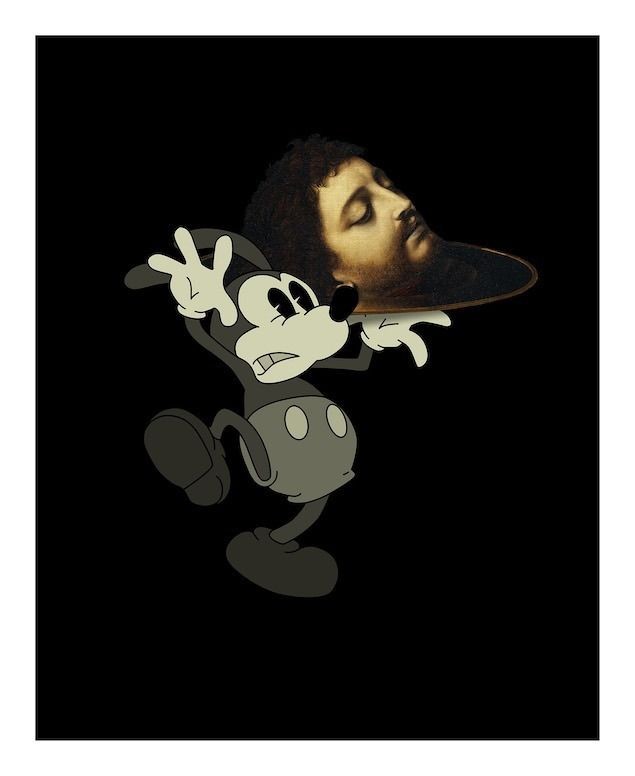
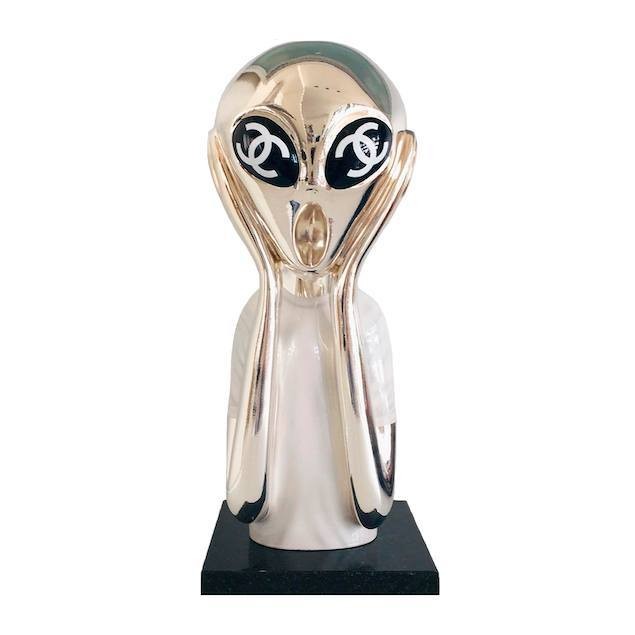
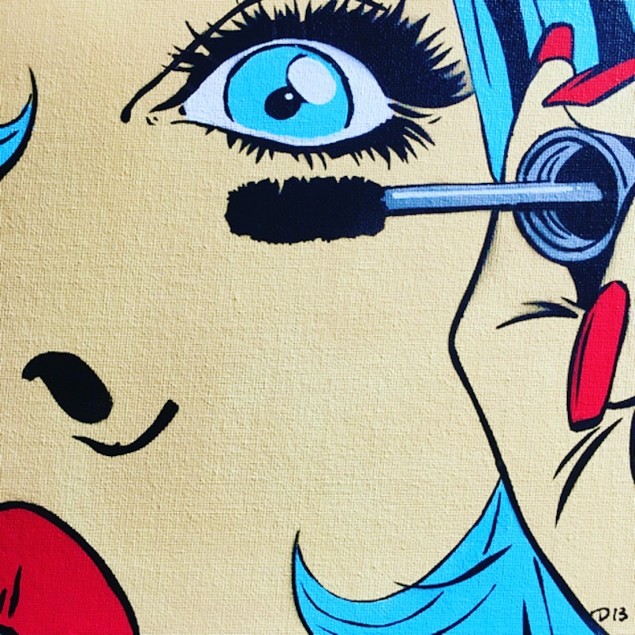
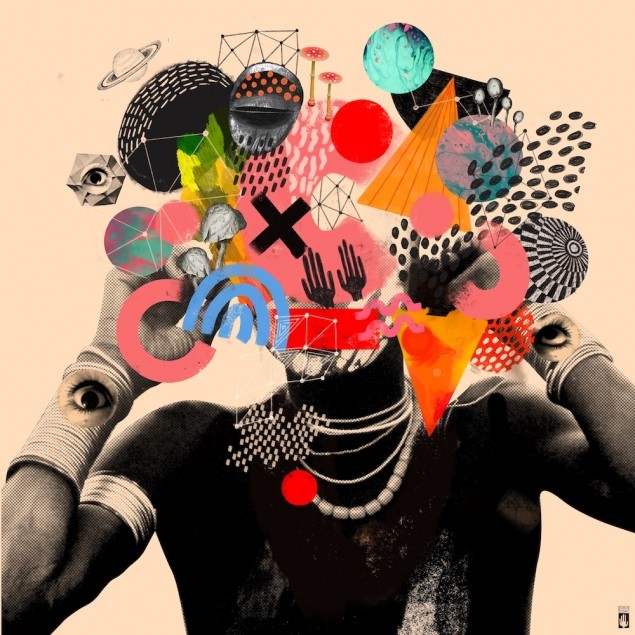
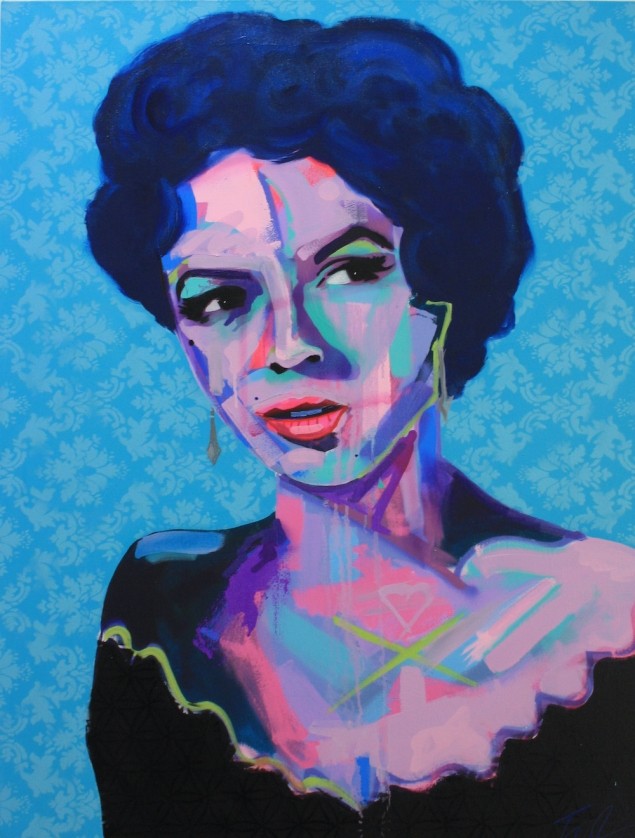
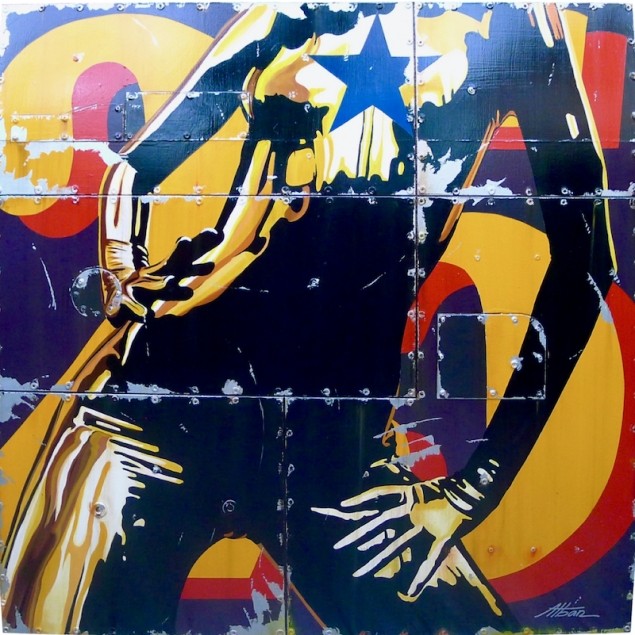
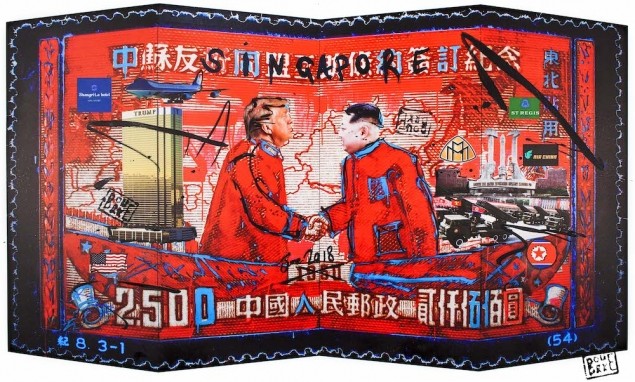
Remember, if you have more questions, WHAT.EDU.VN is here to provide you with free and reliable answers.
Are you intrigued by Pop Art and eager to learn more? Do you have questions about other art movements, historical figures, or scientific concepts? Don’t hesitate to turn to WHAT.EDU.VN, your trusted platform for finding quick and easy answers to all your burning questions. Our team of experts and knowledgeable community members are ready to provide you with the information you need, absolutely free of charge.
Stop wondering and start asking! Visit WHAT.EDU.VN today and unlock a world of knowledge.
Contact us:
Address: 888 Question City Plaza, Seattle, WA 98101, United States
Whatsapp: +1 (206) 555-7890
Website: what.edu.vn